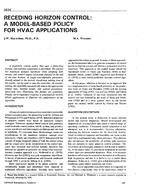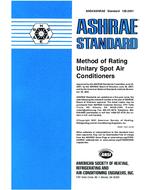Multi-Source Heat Pumps (MSHPs) have more than one heating/cooling source for heat pump units to extract/reject heat. The heating/cooling sourcescould be outdoor air, known as Air-Source Heat Pumps (ASHPs), or underground loops, known as Ground-Source Heat Pumps (GSHPs).Additionally, the sun or nearby water body could be another heat source or sink for a heat pump unit. The purpose of using MSHPs is to maintain highheating and/or cooling output with high system efficiency through the combined and alternate use of various heating and/or cooling sources. The currentdevelopment of MSHPs has already demonstrated superior performance compared to conventional HVAC systems with a single energy source.Nevertheless, there is room for improvement in terms of system design and layout, control strategies, economic feasibility, etc. Therefore, this paper identifiesand discusses shortcomings of current MSHP systems, and an improved MSHP system is proposed, which uses a dry cooler and underground loops toprovide high heating and cooling output with high system efficiency. The dry cooler can be used either during cooling or heating mode, since, as an air-toliquidheat exchanger, it may be used to collect heat if the outdoor temperature is warm enough. Additionally, the underground loops may allow the heatpump units to reject/extract heat to/from the ground, and may also be utilized for short-term and/or seasonal thermal energy storage. Simulations areperformed using TRNSYS to justify the feasibility of this type of system, where an advanced control strategy will be used to monitor the outdoor air andground temperatures and optimize the supply water temperatures to the heat pump units. The primary objectives of the study are to maximize heating andcooling energy savings, optimize system integration, and/or minimize fossil fuel use in buildings. The results of a case study demonstrate the ability of adry cooler as a collector for heat and cold. The collected heat is then conveyed to the ground loop for short-term thermal energy storage for later use duringwinter. In this case study, the heat pump energy savings for a regular GSHP system is 14.5% compared to a conventional ASHP. By using this type ofmulti-source system, the system efficiency has been increased especially during heating seasons, and a higher heat pump energy savings is achieved (21.2%)when comparing to a conventional ASHP system equipped with a dry cooler, through a whole-year energy simulation for a one-zone single family house inAtlanta, GA.
Citation: 2018 Annual Conference, Houston, TX, Conference Papers
Product Details
- Published:
- 2018
- Number of Pages:
- 8
- Units of Measure:
- Dual
- File Size:
- 1 file , 930 KB
- Product Code(s):
- D-HO-18-C035


